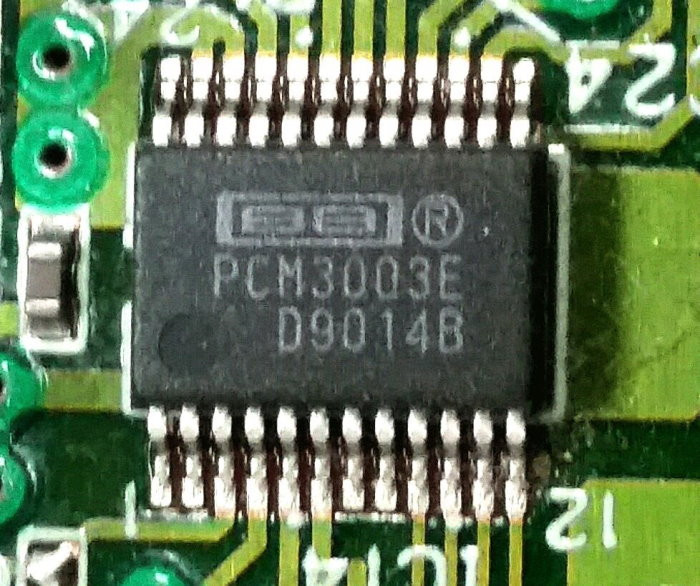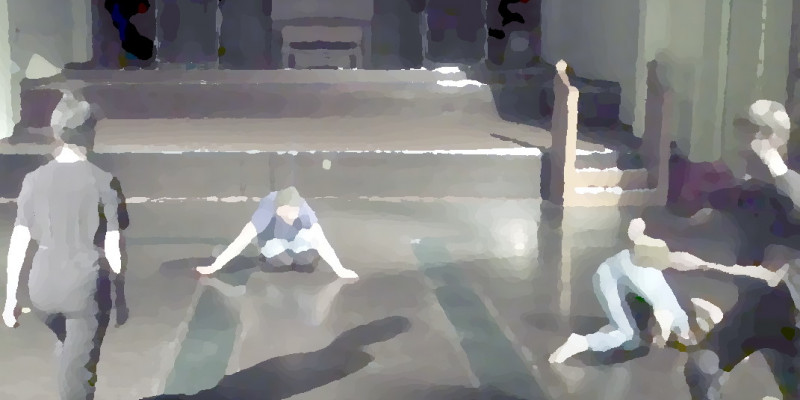
Sounding new materialism
Abstract
To utilize technological devices for creative ends is also to contribute to the cycle of production and obsolescence involved in global capitalism. A serious consideration of the electronic artist’s position within this framework invites an ethical examination of technologically-based practice in relation to the overall waste and exploitation that its connection to technological commodification entails. How does a sonic artist come to terms with the global effects of the tools of her trade?
I offer that the embrace of the perspectives posed by new materialist thought has the potential to act as a means to address the broad contextual issues surrounding creative technology. Specifically, I address three modes of understanding sound technology informed by Jane Bennett’s conception of enchantment. Collectively, they offer possible avenues to facilitate an understanding of technology that allows for technological praxis, while confronting its destructive legacy.
1. Introduction
The work of digital artists and musicians is enabled by technological commodities that have problematic pasts. To utilize technical devices for creative, expressive ends is also to contribute to the cycle of production and obsolescence involved with global capitalism. A serious consideration of the electronic artist’s position within this framework invites an ethical examination of technologically-based practice in relation to the overall waste and exploitation that its connection to technological commodification entails.
At first glance, there appears to be little space left for the creative technological act. When confronted by the scope of the power structures involved, two radical reactions present themselves: to cede to the futility of the expressive effort and simply cease producing work; or to be overwhelmed by the enormity of the task, and cast aside responsibility as being beyond reach. Considering this, how does an electronic musician or digital artist come to terms with the results of her actions as an expressive being in relation to the actions of the workers who risked their health and the health of their communities to create the tools of her trade? How does one begin to come to terms with their contribution to electronic waste in a way that embraces further creative production?
I contend that new materialist philosophy affords a perspective on the physical world that can shift understandings of technological tools from being objects susceptible to obsolescence and disposal, to ones of self-reflection and respect. Key aspects of new materialism can be broadly understood from the work of three authors: Karen Barad, Rosi Braidotti, and Jane Bennett. This paper will focus on the work of the latter, in particular the discourse surrounding her conception of vital materiality.
Bennett describes vital materiality as a reclaiming of the Victorian notion of an immanent life force within physical things. This positioning offers a means of thinking about non-human objects, considering them part of the cycle of life and, in a broad sense, as being alive. Her perspectives contribute to an understanding of technological objects that put them on a more equal footing with human beings, making them more difficult to be considered obsolete and disposable.
2. New materialist perspectives on technology
I offer that the embrace of the perspectives posed by new materialist thought has the potential to act as a means to address the larger contextual issues surrounding the technology involved in the creative act. Specifically, I will focus on the strategic projection of anthropomorphic elements in Jane Bennett’s work as a means to develop new ways of thinking about sound devices that project a kind of strategic humanization on to themselves – enabling an embrace of their own agency and importance.
An anthropomorphic view of the technologies used in sonic expression can facilitate methodologies that encourage a personal connection with these devices, helping push against the immense task of facing up to the totality of late capitalist modes of production. Furthermore, this partially-humanized view of technological devices can also be instrumental in providing an understanding of technology that resists the tendency toward latent assumptions of the inevitability of technological obsolescence.
2.1 Jane Bennett’s enchantment
In her text The Enchantment of Modern Life: Attachments, Crossings, and Ethics (2001), Jane Bennett outlines a relationship with objects that she calls “enchantment”. This perspective, in part, encourages a cultivation of often unexpected moments of delight resulting from the intermingling of human agency and agency of objects. For Bennett, to be enchanted is to allow a sense of wonder that can be experienced with the recognition of the agency of objects. It encourages humans “...to be struck and shaken by the extraordinary that lives amid the familiar and everyday” (Bennett 2001, p. 4). These moments of joy can act as points of entry into ethical questioning as well.
In an enchanted view of technology, the patterns produced by a malfunctioning piece of audio equipment, for example, can be received in the same light as the composition of a human agent. The output of the object in this situation is not taken as a malfunction at all, and the object has the potential to transform from being seen as a damaged possession, to a treasured compositional ally. This perspective is distinct from generalized ecological gestures, or efforts to promote so-called upcycling. Instead, it recognizes the agency of objects and pushes against the perception of them as inanimately serving global capitalism (Bennett 2010, p. 111).
2.2 Enchantment as a conceptual tool for sonic artists
Considering the above, I propose three broad conceptual engagements with sonic technology that are informed by Jane Bennett’s enchanted materialism. They are intended as a means of approaching technologically-enabled expressive acts, while simultaneously confronting the legacy of exploitation and ecological damage related to creative technology. These are as follows:
- Embracing a phenomenological understanding of technological audio devices that recognizes them as cooperative agents in the creative process.
- A broad perception of technology that takes into account the cultural and historical context in which the objects were designed.
- An anthropomorphic sense of connection and responsibility that can result in viewing the objects as bearing the traces of the bodies that contributed to their manufacture.
2.2.1. A phenomenological understanding of technological audio devices
Bennett’s conception of enchanted objects enables a phenomenological view of audio devices that positions them as being fellow musicians, capable of unexpected change and growth. Viewed in this way, the limitations of their intended design can be reconsidered. Artists, then, can evaluate other unforeseen ways of working with these objects. One example of this potential is the use of audio feedback as a performance and compositional system in cooperation with the devices in question.
Bennett highlights the etymology of the word enchant as being derived from the French word meaning “to sing” (Bennett 2001, p. 18). She further argues that the anthropomorphic visualization of objects as repositories for moments of enchantment extends a sense of expressive agency to objects. Bennett frames this in a metaphorical light. But in the sphere of audio production, it can take a more literal tack. Placed in feedback, electronic audio devices have the capacity for creating and altering sound in infinite, unpredictable ways.
The methodology to heighten the sonic agency embedded within audio objects is also alluded to by Bennett via Deleuze and Guattari’s description of the refrain as a complex entangled action that “...turns back on itself, opens onto itself, revealing until then unheard-of potentialities, entering into other connections, setting [things]...adrift in the direction of other assemblages” (Bennett 2001, p. 6). To enfold and turn back an audio signal upon itself is to create a self-expanding and often unpredictable state that is characteristic of audio feedback.
2.2.1.1. Audio feedback
Audio feedback has a history that is intrinsically linked with that of amplified sound. Almost all audio amplifiers use some form of feedback in their operation. That is, in order to properly amplify an electronic audio signal, part of that signal needs to be reintroduced within the amplification mechanism to improve stability and bandwidth. Amplifiers typically do this without adding any more cumulative gain to the system than if the feedback was not present. This net lack of overall addition of amplification informs its name: negative feedback.
A different type of feedback, known as positive feedback, or the Larsen effect, occurs when an amplified audio signal that has passed through the final amplification stage gets re-introduced to the signal chain, resulting in recursive amplification of the signal until differences in the frequency response of the system become expressed as audible tones. For example, if a given amplifier tends to resonate around 6,000 Hz slightly more than other frequencies, the effect of putting it into a positive feedback loop will likely be the production of a 6,000 Hz tone. This is the type of feedback normally associated with the ringing sounds produced by the proximity of microphones to the speakers of a PA system.
Positive feedback tends to be highly unstable, and has historically been sought to be eliminated by designers of audio equipment, performers, and recording engineers. The use of positive audio feedback as a means of generating musical source material dates back at least to the mid-1950s with the work of Nicolas Schöffer and later Roland Kayn (Patterson 2012, p. 48). In popular music, the use of the electric guitar as a generator of feedback-based audio has been popularized by artists such as Jimi Hendrix since the late 1960s, and is a continued presence in guitar-based popular music styles. The use of positive audio feedback in academic electroacoustic music was continued into the 1960s by composers such as Alvin Lucier, Gordon Mumma, and David Tudor, to name a few (Sanfilippo & Valle 2013, p. 12).
2.2.1.2. No input mixing
In the latter part of the 20th century, the practice of using the audio mixer as a generator of sonic material gained notable attention through the work of noise musician Toshimaru Nakamura. After playing electric guitar in an improvised rock group, Nakamura became frustrated with the volume and contextual limitations of playing within the traditional rock instrumentation. After performing solo guitar, in 1995 he moved on to using the mixing board as a musical performance instrument.
His process, which he calls “no-input” mixing, consists of creating positive feedback loops within the signal chain of the mixing deck. That is, he was not vibrating the air and re-introducing the signal via a microphone or magnetic pickup, but rather through directly connected audio cables form the output jacks of the mixer plugged into various input possibilities, which he could further vary by altering volume and EQ parameters in real time.
Needless to say, this is not the manner in which the audio mixer is typically designed to be used and heightens the chaotic nature of the type of positive feedback produced by open-air propagation. The mercurial property of the sound produced meant that he could no longer claim to be in complete control of the operation. In order to instigate no-input performance, Nakamura had to give up a large measure of agency to the machines and the internal feedback system, adjusting his own actions in response to them. This change of power dynamic was a welcome one for him:
I think I find an equal relationship with [the] no-input mixing board, which I didn’t see with the guitar. When I played the guitar, “I” had to play the guitar. But with the mixing board, the machine would play me, and the music would play the other two [band members], and I would do something or maybe nothing. […] for me, [the] no-input mixing board gives me this equal relationship between the music, including the space, the instrument, and me. (Nakamura 2003, n.p.)
2.2.1.3. Human/nonhuman collaboration
The gesture of deliberate identification and cultivation of the agency inherent in nonhuman objects is directly in line with new materialist modes of thought relating to the defamiliarization effects of an enchanted view of audio technology. Via Deleuze and Guattari, Bennett suggests this type of exploratory deterritorialization as a kind of analogue to scientific experimentation. This exploration, she contends, should lead not to a total disorganization, but to results that are “...joyful, context-rich, rehybridized...” (Bennett 2001, p. 25).
Human/nonhuman collaborative exercises like deliberate feedback explore the possibilities of a chaotic, recursive soundsphere through action. The expectations of the results of individual changes enacted by the human participant produce consequences that are often unpredictable – blurring the boundary between actor and actant. This unpredictability produces a sense of surprise and enchantment at the encounter with a nonhuman agential entity, made plainly audible by the feedback manipulation process (Bennett 2010, p. 27).
Jane Bennett further points to a sort of extended phenomenological understanding afforded by the process of enchantment. She points to Diana Coole’s reading of Merleau-Ponty’s phenomenology of perception as one that counteracted the overly anthropocentric tendencies of phenomenological understanding and opened it up to “agentic contributions made by an intersubjective field’ of a “spectrum of agentic capacities” that were sometimes housed in humans but also could be seen in extended systemic actions and objects (Bennett 2010, p. 29).
Regardless of their intended purpose or operation, the internal space of the feedback loop accomplishes a very real activation of the boundary troubling cosmology of new materialism. When many devices are put into feedback within the same mixing console, it often becomes impossible to discern which object is affecting another, and how a specific human-directed change will affect the outcome. Within the feedback pool, the devices act as one, regardless of the intent behind their construction. In this way, their co-operative action belies any presumption of their designed use value.
Additionally, the generative quality of feedback can allow artists to widen the scope of what can be considered a ‘serious’ instrument. Items that might have been disregarded due to the poor quality of their intended use, have the possibility of being reconsidered as valuable expressive tools. A widened scope of practice such as this push against the demand for new consumption of effectively disposable electronic goods produced in poor conditions.
Moreover, the mindset afforded by enchantment can impart this sense of value and respect for objects in a host of ways beyond feedback. These include a heightened understanding of the importance of finding new creative uses for objects, as well as an increased awareness and potential consumer demand for technological creative products that do not rely on unfair labour practices and environmentally destructive methods.
2.2.2. Connection to socioeconomic and cultural contexts of technology
The second area of operation relates to the extended understanding of connection to the structural apparatuses that affect what commodities become produced, and subsequently absorbed by global capitalism. In an enchanted worldview, audio devices can be seen to be the products of and actants within large-scale systems that include capitalism, national boundaries, political movements, etc. In this sense, objects are intrinsically interlinked within a vast array of mutually co-creative actions and objects. Bennett provides a brief illustration of this systemic setting in her description of a new materialist understanding of an electrical power grid:
To the vital materialist, the electrical grid is better understood as a volatile mix of coal, sweat, electromagnetic fields, computer programs, electron streams, profit motives, heat, lifestyles, nuclei, fuel, plastic, fantasies of mastery, static, legislation, water, economic theory, wire, and wood – to name just some of the actants (Bennett 2010, p. 25).
In a setting such as this, the agency of audio technology within an extended understanding of active systemic processes does not discontinue after they have been deemed in the large to be non-functional or obsolete. This applies not only to their operation, but to their meaning as well. As products of a specific moment in time within the mechanism of global capital they reflect, in their physicality, the actions and intents of the systems and agents that affected their creation. These aspects include aesthetic design, material choices, operation, and advertising, to name just a few. They mirror the view of an intended customer base, a culture for whom the audio produced would be relevant, and a hierarchy of values of the product designers as well.
2.2.2.1. Socioeconomic case study – the Zoom 505
To ground this extended connection of objects to systems, I will focus on a specific piece of equipment used in my own performance practice and explore its connection to the systems in question. The audio device used for this examination will be the Zoom 505 Guitar Multi-Effects Processor (figure 1). Although the unit was produced in 1995 for a mass-consumer market, I bought my particular device at a garage sale in Santa Cruz, California in 2010. At this time, I was beginning to explore the wider possibilities of low-quality, broken, and obsolete audio products in feedback, and the Zoom 505 met at least one of those criteria. When placed within the feedback milieu, I found it able to create an exceptional variety of sounds – from delicate, almost tonal repetitions to deep low-frequency growls.
The sounds that the 505 emitted in this context were of a wholly different nature than those normatively associated with it, and although it is now a staple of my live performance arrangement, I would have never considered purchasing the device for its intended purpose. This was largely due to the design qualities and reputation of the company that manufactured it, which was widely associated at the time with inexpensive hand-held recorders and low-end guitar processors.
2.2.2.2. Zoom in a marketing context
An examination of the Zoom Corporation’s origins, production methods, and advertising tactics will provide more context for my own initial understanding of this device, as well as the actants and forces that brought the object into the wider world of technological audio commodities.

Celebrity endorsement has been a standard marketing technique for decades. Audio technology manufacturers like Zoom also associate their products with celebrity to increase consumption. The guitar processing industry, although much smaller than that of tech giants like Apple, is still a formidable economic entity and in 2011 generated over $300,000,000 per year in profits (Block 2011, p. 22).
Formed in Japan in 1983, the Zoom Corporation specialized in integrated circuit chips for digital signal processing, and then began to produce their own effects processing units. Their debut product, the Zoom 2002 premiered in 1992, and boasted of advanced signal processing capability in a small package. Like many other audio effects manufacturers, Zoom used celebrity endorsement from popular rock guitarists, whom the company believed their audiences wished to emulate. By placing these musicians in advertisements with their products, the audio timbre associated with the musician was presumably connected to the product.
Although these ads juxtaposed the musicians and the equipment, they often made no claims as to whether the musicians actually used the units in any way (Zoom Corporation 2001, p. 20). This marketing technique remained in use to sell later versions of similar multi-effects units, issuing specific ‘signature’ devices modelled after prominent guitarists. Released in 2005, and designed to be associated with popular guitarist John 5, the Zoom G1J offered the same technology as the standard production model G1 multi-effects processor, except for the fact that 40 of the sound pre-sets included in the default settings were programmed by the musician that was its namesake (Zoom Corporation, 2005).
Despite the advertised claims, however, audio quality did not seem to be the paramount concern for the Zoom 505. This becomes evident when examining the specifications of the Zoom 505 in comparison with its subsequent replacement. Both of these units employed a sample rate of 31,250 Hz per second. This is rather narrow considering the standard 41,400 Hz required to fully represent the total range of human hearing, and is certainly not indicative of a product designed with high audio fidelity as its primary purpose. This relatively low sample rate persisted in subsequent models, with the analogue to digital conversion bit depth and oversampling rate in the later 505II (Zoom Corporation 2000, p. 30) unit actually decreasing from the previous model (Zoom Corporation 1995, p. 5).
A case study by Astrid Lassen sheds some light on the internal conflicts within guitar effect companies that may contribute to design decisions like those seen in the Zoom 505. Lassen examined the decision-making processes of a digital audio effects company for a period of two years, beginning in 2005. The company, Danish-owned SME, was examined in terms of the practices of the engineers in contrast to the management. She contended that the engineers were primarily interested in more disruptive and financially risky sound-producing commodities that had the potential to overshadow currently produced models.
The management, however, were more interested in “incrementally exploiting and optimizing existing products or processes” which would produce more profit (Lassen et al. 2009, p. 182). In other words, while the engineers were more interested in creating new and different devices, the management was focused on what the author deems “controlled adaptation” – creating ever-newer markets for existing products by making minor, inexpensive changes combined with intensive advertising.
In this case, as in the Zoom 505, to address the object is to address the totality of the actions and actants that led to the product’s manufacture. The system of capital in which audio manufacturers operate, the collective action of the advertising industry, the specific properties of the components involved its design – all these and much more contributed to the collection of agencies that resulted in the 505 devices. Although agential objects play an immense role in these wider assemblages, human bodies are also caught up in its actions.
2.2.3. Anthropomorphic connection to technological objects
This leads to the third aspect of aural practice to be addressed. It concerns the physical manifestations of larger systemic operations that become embedded within the materiality of the audio devices themselves. These include the record left behind by those whose labour and bodies came to produce and assemble the components and cases of the devices.
To read audio commodities in this manner is to see them as palimpsests, as collective imprints of the material and human actions that went into their creation. In this way, the obsolete becomes the archival, a record of material and human interaction that emerges as a consequent by-product of technological manufacture.
2.2.3.1. The Zoom 505 as palimpsest
Identifying the specific properties and entangled histories involved in the manufacturing of technological devices can be a monumentally difficult, if not impossible task to reckon with fully. Early on, the Zoom Corporation adopted (Iijima 2017) the prominent method of outsourcing the production and assembly of component parts to exterior companies whose exchange rates and lax labour laws made manufacturing less costly (Pellow & Park 2002, p. 174). Although this process, known today as electronics manufacturing services or EMS (Lüthje 2002, p. 227), is the dominant method of electronics production, precious little information about the companies serviced, or the environmental and labour conditions involved in the manufacturing process, is publicly available.
This is possibly the result of a desire to keep competitive information within the domain of trade secrets. Many aspects of technological design and manufacturing processes are kept from public view, and EMS providers are involved in this retention (Awai 2016, p. 123). In addition, the EMS process often spans numerous subcontractors and factories, making the creation of a complete account of its effects an incredibly complex exercise. Aggregate data valuation services do exist, but they tend to be focused on single component manufacturers rather than larger retail producers. Because of this, it became evident that in order to make a positive connection between my Zoom 505 unit and its potential effect on the wider physical world, it was necessary to partially dismantle the device, and directly investigate the provenance of its individual components.
2.2.3.2. Zoom 505 physical deconstruction
Opening the 505 Guitar Multi-Effects unit showed a number of parts that warranted investigation. Most, however, lacked sufficient markings to enable the proper identification of the manufacturer, or sufficient available information about the manufacturer to determine the circumstance of their making. Out of the hundreds of components in the 505 unit, only two IC chips had both identifiable markings and available records sufficient to get a picture of the scope of their effects.
The first was a semiconductor memory chip that the device uses to store custom pre-sets made by the user. The IC in question is the Winbond W24L257AJ-15 chip (figure 2), made by the Winbond Electronics Corporation in its Memory Product Foundry located in Taichung, Taiwan.

2.2.3.3. Environmental impact of the Winbond chip
The Memory Product Foundry is situated within a huge manufacturing zone known as the Hsinchu Science Park, where Winbond and many other companies continue production to the present day. Many of the manufacturers at the Science Park exhibit patterns of pollution and lax safety standards consistent with the EMS process. A 2005 study found that soil samples taken in the area contained extremely high levels of volatile organic compounds used in electronics component manufacturing (Wang et al. 2001, p. 1,236).
The toxic conditions of component manufacturing in Taiwan follow a practice that stems from the early days of Silicon Valley, where companies like National Semiconductor and other tech manufacturers regularly dumped toxic waste into Bay Area public sewer systems (Pellow & Park 2002, pp. 68-71). Silicon Valley companies also routinely exposed their lower-level workers to toxic chemicals. The majority of the lowest paid workers doing the most dangerous jobs were people of colour and women (Pellow & Park 2002, pp. 66-68).
The Hsinchu Science Park echoes these practices, as the most dangerous work done in the Science Park is engaged by majority female, majority immigrant workers (Chang & Tu 2004, p. 260). The potential for these workers to mobilize and improve their conditions is hampered by the proximity of the IT industry to the Taiwanese government. A prevailing cultural view correlates the betterment of living conditions with the growth of the IT industry, even as workers and surrounding communities are routinely exposed to hazardous chemicals (Chang & Tu 2004, p. 258).
Hsinchu Science Park employees showed decreased levels of pulmonary functions and increased lung abnormalities (Yoshida 2001, p. 8), especially in the photolithographic areas that use toxic chemicals. These effects extended to local residential areas as well, as many of those living nearby the Hsinchu Science Park showed high levels of toxicity in their blood and urine from decades of ground water contamination (Chang et al. 2001, p. 21). The protection afforded by trade secrecy legislation can help to shield electronic component manufacturers from public scrutiny in this area. Even with this protection, however, Winbond still earned an independent rating in the 28th percentile in 2017 for environmental issues in relation to other firms (CSR Hub 2016).
The legacy of the Winbond chip points to the immensity of the scope of information relating to the traces left behind by this particular component. The operation of the memory chip is ironically devoid of a sense of memory in regards to its own production. The little facts we do know point to a continuation of some of the same polluting effects present in the earliest days of the ‘Silicon Revolution’. An industry that was touted as being clean in relation to the smokestacks of other modes of manufacturing, instead directed its waste into the ground where its effects were not detectable until much later (Pellow & Park 2002, pp. 71-72).
With the very general information available regarding the connection between the bodies of the manufacturing workers, the factory, and the materials involved, it is difficult to obtain an image that we can directly impart Bennett’s sense of anthropomorphism into and connect the objective effects with our own experiences, even though we are aware of some aspects of the circumstances. The next component investigated, however, has a much stronger association with this straightforward connection.
2.2.3.4. Environmental and labour impact of the Burr-Brown Analog-to-Digital Converter
In addition to the pre-set RAM chip in the Zoom 505, the other most identifiable component was the PCM 3003 Analog-to-Digital Converter manufactured by the Burr-Brown Corporation (figure 3). This chip handled the conversion of the electrical impulses that enter the unit into digital information, and vice versa.
This component was produced in Burr-Brown’s manufacturing facilities in South Tucson, Arizona. This area has been a concentrated electronics manufacturing centre for over 70 years, housing Hughes Air Force Missile Plant No. 44 and other military facilities. The area has contemporaneously been home to a residential population of predominantly Latinx and Native American communities.

Since the founding of the Hughes plant in the 1940s, the toxic industrial waste from the plants was dumped into unlined industrial pits, which over time leached into the groundwater table, poisoning the city’s aquifers with trichloroethylene (TCE) used to clean silicone chips. The contamination affected the local population of over 600,000 residents and fouled the water in the workplaces of Hughes Aircraft and the Tucson International Airport Authority (Lindsay, n.d., p. 6).
In 1985, the toxic plume of trichloroethylene from Burr-Brown’s factories had been verified as extending far beyond what was previously publicly known. The toxicity spread across an area over five miles long and two miles wide, prompting the EPA to close contaminated wells and declare much of the area a superfund site. At the centre of the cloud formation, TCE levels were measured at 20 times the EPA maximum (Ostertag 1991, p. 49).
2.2.3.5. Public action against Burr-Brown
In the zone of the toxic contamination lived Rose Marie Augustine and her family. After being informed of the EPA’s findings, she connected the heightened carcinogen levels with elevated rates of cancer and rare disease within her community. Her own family was impacted, with cancer affecting her husband, and her son contracting a rare muscular condition. She attributed both of her family members’ conditions to years of exposure to toxic drinking and bathing water.
After reaching out with community members to local officials for answers, they were rebuffed, being called “hysterical Hispanic housewives” by one official and another telling them that “...the people on the south side were obese, lazy, and had poor eating habits, that it was our lifestyle and not the TC [toxic chemicals] in the water that caused our health problems” (Cox & Pezzullo 2009, p. 277). The group came to conclude that local officials knew about the contamination, but did not inform the population about the toxicity problem for fear that the negative publicity would dissuade future businesses from locating to South Tucson.
In response, Augustine organized the Tucsonans for a Clean Environment (TCE) to force local government and manufacturers to make changes to protect the local citizens. By 1991, the group was able to get Burr-Brown to agree to divert its chemical dumping away from the water supply and Hughes to install a 33-million-dollar air stripper. Burr-Brown was sold to Texas Instruments in 2000, but the legacy of semiconductor manufacture endures. After more than 30 years, the group that Augustine founded remains persistent as the ground water contamination that still plagues the South Tucson community: in 2017, they prepared for new conflicts over the discovery of 1,4 dioxane contaminants in the water table (Davis 2017).
2.2.3.6. Engagement with the implications of technical objects as palimpsests
This leaves us with a striking case in which the materiality of a specific component of audio technology had devastating effects on the material and bodies of a wide region. The same TCEs that bound with and changed the Burr-Brown D/A converter to enable its function, also became bound to the bodies of the human beings in the city of South Tucson. To take these material connections seriously, it becomes impossible to separate the physicality of the sonic technological object from its history which, when used by sound producers, includes their own bodies. The radical permeability of the technological object as palimpsest, binding the audio practitioner up with the ethical and epistemological properties of its ontology.
The act of engaging with these objects is to bring the discomfiting collected history and effects of its physical components into the mix, in a sort of unequal but collective effort. An action of performance involving the 505 processor, then, must also include the actions of the factory workers in South Tucson, and the effects acted upon them by the manufacture of its components, binding their humanity up with the material agency of the PCM 3003.
2.2.3.7. Collaborative crossings
The perspective of collaborative action brings along with it the associated effects of embedded power relations as well. Can one label a performance seen in this light as collaborative, when the embedded humanity implied by the object cannot signal its consent? Merely considering the prospect can again open up the initial problematic of the tendency toward abandoning technological practices on one end, and capitulation to apathy on the other.
Pointing to the potential benefit from encountering this sort of discomfort, Jane Bennett asserts that the positive creative possibilities of the dissolution of bodily boundaries are worth the risk. While maintaining a view towards recognizing the larger systems of power relations at play, she pushes against terms that presume the separateness of entities and, by extension, the possibility of redirecting the streams of influence.
Instead, she prefers the term “crossings” to indicate an active meeting of entities with a more fluid consideration of boundaries. She projects that crossings have a lively potential to bring new things into being by creating negotiable spaces that allow for new types of actions (Bennett 2001, p. 31). Bennett further confers the same sort of actions resulting from the intermixing of human cultures to human-nonhuman crossings. Citing Homi Bhabha’s ideas of cultural ambiguity she portrays crossings as:
...a process of identifying with and through another object, on object of otherness, at which point the agency of identification – the subject – is itself always ambivalent, because of the intervention of that otherness […] it bears the traces of those feelings and practice which inform it. (Bennett 2001, p. 31)
In anthropomorphically considering the technological object as an agential being, it may be possible to counter the overwhelming tendency involved in enfolding the historical subjectivity of the objective world into our own. In allowing the consideration of the electronic components within my own audio devices, I must reckon with the ugly timelines of human-imposed contamination and exploitation that are present within these objects.
At the same time, however, I am also obliged to take into account the traces of persons like Rose Marie Augustine, whose actions of resistance are likewise a component in the act of crossing. The anthropomorphic projection of the metaphorical fingerprints of a perceived human agent within the understanding of crossings can serve to render the task of confronting larger socio-political systems more personal and achievable.
3. Conclusion
Taken collectively, the enchanted understandings of audio technology outlined here overlap and interact with each other. The broader circumstances related to the production of commodified technological objects leave their imprints on the commodities produced. These objects carry with them impressions of the bodies that affected them and the bodies they affected.
These imprints can be detected through sound as audible traces which, in the realm of audio feedback, become manifest, active, and capable of creating new sounds. The quality of the sounds produced have nothing to do with any presumed functional standard or intent of their production. A brand new $1,400 tape echo can have as much meaningful effect as a discarded low-quality multi-effects pedal, providing an alternative to the capitalist drive toward the never-ending purchase of new commodities.
The focus on audition and co-creation of new sound is reliant on a sense of openness in relation to the value of audio technical objects. This openness and strategic anthropomorphism allow for a sense of playfulness as a device is put into feedback and heard to ‘speak’. Often these voices can produce effects that would never have been attempted with a more traditional utilitarian viewpoint.
The results can be exhilarating and surprising. The activity is one that is enabled by, and productive of, an embrace of enchantment toward the devices that belies any sense of obsolescence. Thus, an acceptance of an anthropomorphic playground of audio feedback can provide space for innumerable moments of enchantment intrinsically intertwined with ethics. Through sound, feedback can cause musicians and audiences to:
...linger in those moments during which they find themselves fascinated by objects, taking them as clues to the material vitality that they share with them. This sense of a strange and incomplete commonality with the outside may induce vital materialists to treat nonhumans – animals, plants, earth, even artifacts and commodities – more carefully. (Bennett 2010, p. 19)
I propose that this type of stock-taking is especially necessary for musical and artistic practitioners. By recognizing the human trace within the technologically obsolete, we can come to terms not only with a sense of value in what could otherwise be considered garbage, but in recognizing the wider world of discarded objects as being bound up within our own interests and bodies.
With this carefully limited sense of self-interest, we can hope to develop a capacity for empathy that encompasses physical objects as our own, and in that way impact on our shared sense of ethics and actions. In such a frame of mind it becomes difficult if not impossible to consider any being – human or nonhuman – as disposable. To do so would render one’s self without value, as well.





